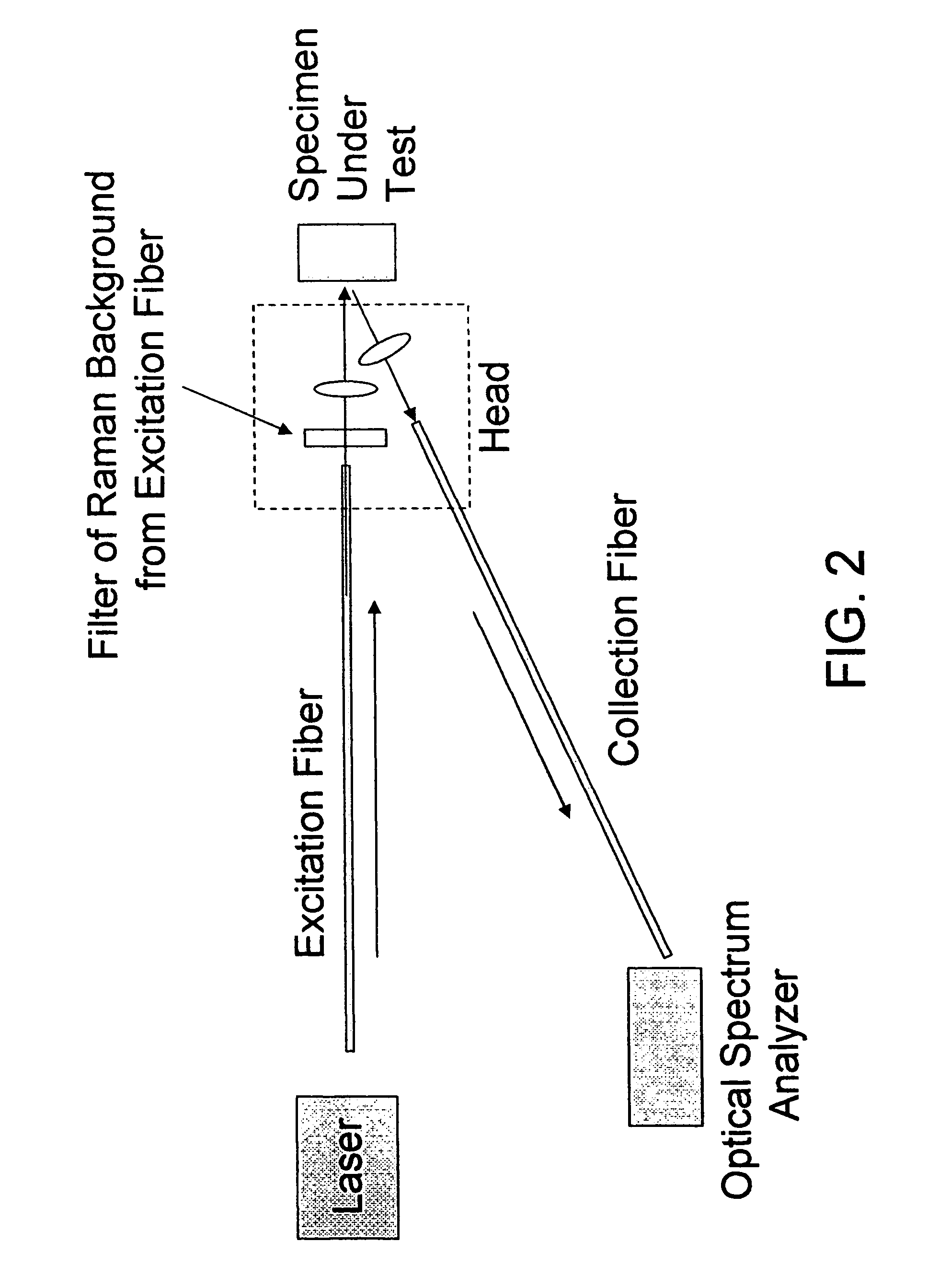Method and apparatus for conducting RAMAN spectroscopy using a remote optical probe
a technology of raman spectroscopy and optical probe, which is applied in the direction of spectrometry/spectrophotometry/monochromators, optical radiation measurement, instruments, etc., can solve the problems of increasing the cost of optical probe heads, generating relative broadband spurious background noise signals, and significantly less practical disposable optical probe heads. achieve the effect of maintaining sensitivity of the system, reducing the probability of raman spectroscopy being carried out, and reducing the number of spur
- Summary
- Abstract
- Description
- Claims
- Application Information
AI Technical Summary
Benefits of technology
Problems solved by technology
Method used
Image
Examples
Embodiment Construction
[0038] Looking first at FIGS. 3 and 4, there is shown a novel Raman spectroscopy system 5 for conducting remoter sensing of a specimen 10. Novel Raman spectroscopy system 5 generally comprises a laser 15 for generating the Raman pump signal, an optical probe assembly 20 for (i) delivering the Raman pump signal to the specimen, and (ii) gathering the Raman signature from the specimen, and an optical spectrum analyzer 25 for analyzing the Raman signature of the specimen so as to identify and characterize the specimen.
[0039] Laser 15 may comprise any laser suitable for use in Raman spectroscopy. By way of example but not limitation, laser 15 may comprise one or more >300 mW, 785 nm semiconductor lasers with limited linewidths (e.g.,˜2 cm−1). The output of laser 15 is delivered into the optical probe assembly 20 for delivery to the specimen.
[0040] Optical probe assembly 20 generally comprises a light guide 30 for delivering excitation (pump) light to the specimen and for collecting th...
PUM
| Property | Measurement | Unit |
|---|---|---|
| wavelength range | aaaaa | aaaaa |
| capillary structure | aaaaa | aaaaa |
| optical index | aaaaa | aaaaa |
Abstract
Description
Claims
Application Information
 Login to View More
Login to View More - R&D
- Intellectual Property
- Life Sciences
- Materials
- Tech Scout
- Unparalleled Data Quality
- Higher Quality Content
- 60% Fewer Hallucinations
Browse by: Latest US Patents, China's latest patents, Technical Efficacy Thesaurus, Application Domain, Technology Topic, Popular Technical Reports.
© 2025 PatSnap. All rights reserved.Legal|Privacy policy|Modern Slavery Act Transparency Statement|Sitemap|About US| Contact US: help@patsnap.com



